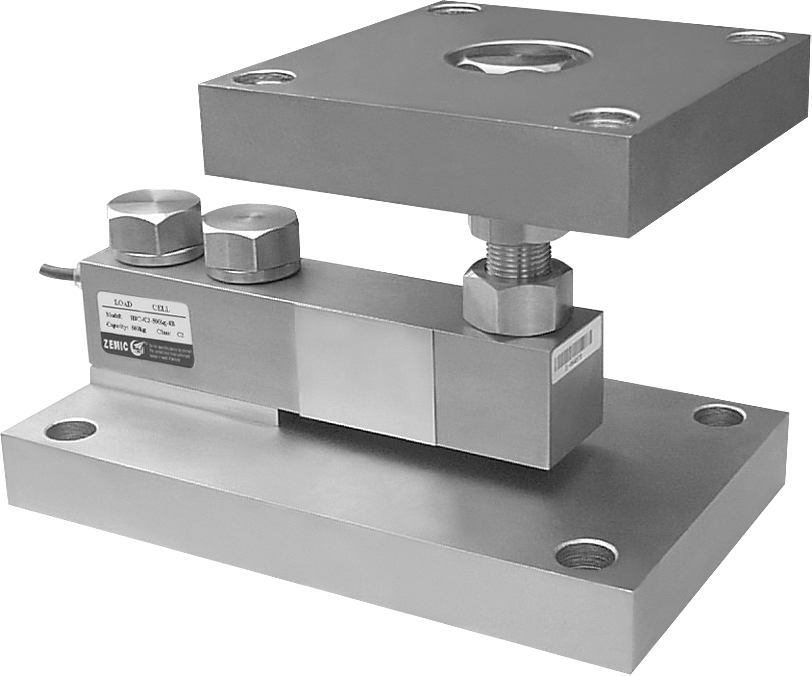
Image Source: weeginstrumenten.nl
There are different types of materials and process control testing procedures. The use of force as a variable is one of the ways in which materials and other complex assemblies can be tested on a wide range of parameters. The fact heavy objects will deflect like a spring or a lever more than light objects has been common knowledge for centuries. Improvements on that concept have seen the development of load cells configured to test and measure a variety of materials and process controls.
Below are some of the materials and other specialized tests that use force as a variable; including some of the more common applications where these tests are applied:
Force vs. Deflection
Force versus deflection as characteristics of a raw materials or an assembly can be determined using force as a variable. During this kind of testing, it’s necessary to have the unit being tested under control in terms of orientation and position, while having control over the magnitude and direction of the force being applied to measure displacements and other parameters, which will vary depending on that force.
Over the years, advanced testing machines have been developed to cater to those required controls. A typical testing machine will have a clamp where other fixtures for holding or rotating the unit under test can be attached. Many other transducers designed to measure angle, torque, pressure and any other parameter that is required can be attached to that machine. The Interface Low Profile cells are often more suitable for testing linear force and torque, as it is common for the two to be tested concurrently; in addition these cells have a high rejection of extraneous loads.
Shear Force vs. Compaction
The objective of testing shear strength as opposed to compaction for materials such as construction resources and ground soils is to determine their strengths at different levels of use; whether underground or above the ground at different floors of a high-rise building. Normally, a test block that has been specially made is used. The test block is designed to test the compaction and shear strength together. It has a rectangular hole running through it and another running perpendicular from the first hole where a shear block with a rectangular hole is inserted such that the hole on the shear block ends up aligned with the first hole.
During testing, the material to be tested is packed inside the first hollow rectangle close to the brim and through the hole in the shear block. After that, a rectangular piston is used to compact the material under test inside the hollow rectangle and to eliminate any voids and air pockets. All this is done in a specialty machine that has the ability to exact compression pressure first, and then apply a pull on the shear block to enact a shear force on the material being tested. Both the compression piston and the shear pull consist of load cells, and different force levels are used to get different outputs that can be used to determine the shear versus compaction forces.
The Peel Force
Peel force test is a common test for adhesives, paints and adhesive coated tapes. The parameters used are normally detailed or specified by industry standards or a government body. During testing, the rate of the pull has to be closely controlled for correct determination of the peel force for that material.
Adhesive tapes are applied onto a surface according to their specified instructions, and then pulled away in a specific way using a system that has a load cell. As for paints, they are painted on a surface as per their instructions, and thereafter a special adhesive tape is applied on the painted surface and then pulled away in accordance with test parameters.
Adhesiveness or Bonding Shear Force
Adhesives and bonding agents are used in various assemblies. Their bonding characteristics among other traits that may be specified, such as elasticity, electrical conductivity, resistance to corrosion, temperature coefficient and any other controllable parameters are normally tested. The tests are done using the general-purpose shear test machines as well as in-house designed testers meant for specific tests on distinctive assemblies.
On Safety; Proof Testing
It may be required by government and industry specifications that components of particular systems that could result in death or injuries or result in costly damage to equipment, be tested at several times above their rated parameters.
For load cell manufacturers, the application of a load cell on a crane in tension is the most sensitive liability area. This is especially crucial where there is a possibility that a person could be beneath the load intentionally or unintentionally. Proof testing in such a case is normally specified at five times the rating of the equipment, meaning a load five times the rating is going to be used in the proof.
Fatigue Testing
Load cells are necessary during the testing of parts, materials and assemblies for their fatigue to destruction. Since no one can accurately foretell the exact time and point when destruction will occur, the load cells are used in conjunction with data logging systems. Accurate records of forces involved at any moment throughout the test are vital for engineers to analyze stresses that will occur up until the moment of ultimate failure.
For more information on your weighing equipment needs, contact Quality Scales Unlimited.




